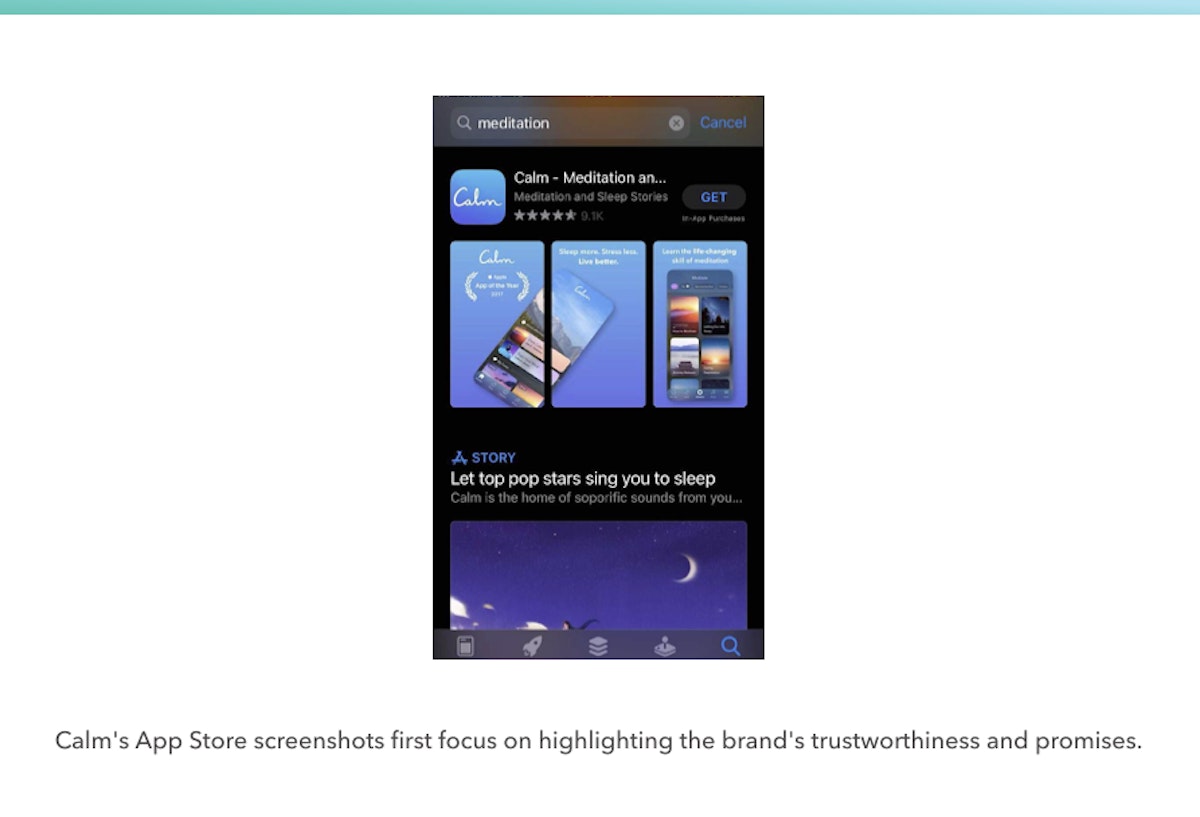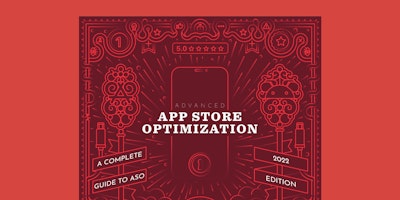
How to Drive More Organic Downloads to Your App?
In app marketing, downloads are often considered as belonging to one of two groups: those that come from organic sources and those that come from paid sources. A frequent misconception that derives from these terms is that all organic installs are completely free. In reality, organic growth often comes at a cost.
So, what is the difference between paid and organic traffic? How can you organically grow your app’s audience? Let’s find out!
Using paid vs organic user acquisition
Paid user acquisition
Paid user acquisition (obviously) covers all paid efforts meant to increase the number of installs for your app, for which performance can be measured directly. As such, it is mostly derived from social media ads, search ads, in-app ads, or other trackable digital advertising methods.
The use of trackers (such as the Identifier for Advertisers (IDFA) and UTM codes in hyperlinks) in these channels can help advertisers understand which tactics and campaigns are successful by optimizing for cost per acquisition (CPA) and other metrics.
By delivering a steady influx of new users at a quantifiable cost, paid user acquisition offers immediate insight into return on investment. It does this by pinpointing customer segments with a high propensity to purchase or subscribe to your services.
So it’s often considered the most practical marketing channel. The main downside of paid user acquisition is, however, that it can quickly become very costly as marginal costs can increase very quickly.
Organic user acquisition
On the other hand, organic user acquisition is often considered to be “everything but” paid user acquisition. This may be, in part, a consequence of attribution tools classifying all installs unable to be attributed to a tracked user as “organic”, even though some organic acquisition efforts can in fact be tracked.
Another consequence of organic user acquisition being seen as the opposite of “paid” is the expectation of organic UA to be free, or at least to cost much less. In reality, organic user acquisition relies largely on users downloading your app “by themselves.”
While this may seem completely free, it requires a lot of strategizing and marketing to get to the level where large amounts of users find your app organically.
Examples of organic installs include users who:
- Download your app after reading about it in a blog or press article
- Search for your brand name in the App Store after seeing an ad for your app in a non-digital or print format
- Find your app after completing a generic keyword search in the App Store
- Are referred to your app by another user
All of these methods require some real input of time and effort, so before we review different methods to generate more organic downloads, it is important to note these are not always “free.”
4 ways to increase your app’s organic downloads
When it comes to increasing organic downloads, the challenge marketers face is convincing people they should actively look to download their app or share it with others, instead of “pushing” their product directly through a digital ad. Multiple options can be considered and may be more or less relevant depending on the app. Let’s review four ways you can increase your app’s organic downloads:
1. Search optimization: Present your app to users who need it
Products that answer a specific, well-known need are often searched for. As a result, a common strategy is to identify the most relevant terms that drive actual search traffic, and optimize your app’s metadata to appear at the top of search results for the most popular queries in the App Store and Play Store. This strategy is the basis of ASO, and can be put into practice by all sorts of apps. As such, this strategy “only” requires identifying how your app is relevant to users’ wishes and the terms your potential users employ to find an app that will answer their needs.
Unlock the potential of app store search optimization with our advanced ASO Keyword Research Guide
While the logic behind app store search optimization can be applied to all apps and all countries, don’t forget that such a method requires relevant search traffic to preexist. Consequently, it will mostly benefit apps that offer a solution to a pre-existing, well-identified need more than apps that would need to educate their audience about the benefits of their products.
For instance, consider how alarm clocks have been a popular commodity since long before the App Store, whereas VPN or AdBlocker apps have become an increasingly searched product as people learned more about online privacy. That is why using a ASO tool with keyword suggestions can be useful both to establish the growth potential of your app store search optimization strategy and identify which keywords to go after.
2. Increase brand awareness & consideration
Another way to have users actively look for your app is by increasing the notoriety of your brand.
Here, the difference with keyword optimization is adapting how you communicate about the immaterial benefits of your product and not simply your app’s features.
Building your brand and then raising awareness through the many existing marketing channels takes much time and effort, but it is ultimately what will lead users to search specifically for your brand name on the store instead of a more competitive, generic keyword. Such efforts are eventually crucial, especially when considering that the overwhelming majority of the 100 most searched keywords in both the app stores are brand names.
Learn more about brand vs. generic keyword optimization for App Store search
Although TV is often the most thought-of marketing channel used to increase brand awareness, it’s important to consider the role of ASO in building your brand.
As your store page is the one bottleneck every user goes through to download your app, it is key to ensure the message conveyed by your store page aligns and amplifies all your branding efforts. Such efforts mean optimizing your impression to download conversion rate, but may also include monitoring other sorts of store data. For instance, comparing brand notoriety with competitors or tracking the top reasons for user satisfaction in reviews to highlight these in your brand message.

3. Create referral loops & virality
One of the most sought levers of organic growth is achieving virality by turning users into ambassadors for your product.
This is often considered the most difficult growth strategy to implement successfully, but also the one that can yield the best results. To that end, one of the most common methods employed is building a referral program to incentivize users to proactively convince others to download your app.
Nevertheless, the challenge of referral programs and virality lies in identifying and leveraging the “aha! moment(s)” of an app’s user experience (UX) to drive users to share their experience with others.
As such tactics are linked to the app’s UX, they are often left in the hands of a product team and considered as not really related to App Store Optimization. However, it is important to consider:
- How user reviews can again provide insights into why users fall in love with your app
- How depicting the potential “aha moment” with keywords and creative optimization can boost conversion drastically
It is also worth noting that Google and Apple have created solutions to allow developers to have their users experience “aha moments” through the use of Google Play Instant Apps and Apple App Clips respectively. The latter, in particular, is seemingly meant to drive virality, as both the context in which potential users may encounter an App Clip and the possibilities to have that App Clip shared are meant to allow for maximum outreach.
Find out more about App Clips and how to use them
4. Partnerships & bundles
The final method we’ll mention to organically grow app installs are partnerships and bundles.
This consists of incentivizing potential users to download an app by joining forces with another app or company to either cross-promote products or create a feeling of windfall effect. Such tactics usually require identifying complementary products and always include offering a discount, with the expected results of reaching a new audience or getting preferential access to a particularly relevant audience.
This is probably the organic lever that ties the least with ASO. Users coming from such channels will most likely have the highest intent level of downloading your app before even reaching it on the store.
Nevertheless, optimizing creatives to promote a deal (within the limits allowed by store guidelines) and keeping an eye on the impact of these deals on the rest of your store traffic. For instance, make sure there are no negative ratings due to technical integration issues.
Leverage native store marketing tools
1. Custom product pages (CPPs)
Custom product pages are alternate versions of an App Store product page that marketers can create to highlight different functionalities, content, or offers than those shown on the default page. Developers can create up to 35 customized variants of their default product page (with alternate promotional text, screenshots, and/or app preview video on each variant) to target different segments of their target audience.
Custom product pages can help you drive more organic downloads to your app, as you highlight content, features, promotions, etc., that are adapted for specific segments of store visitors (as a result, these store visitors will ideally be more inclined to download your app).
2. In-app events
With the event name and short description indexed by the App Store (meaning the keywords in these fields can contribute to increasing your app visibility), in-app events (IAE) serve to reach new users, engage current users, or reconnect with lapsed users on the store.
Being able to promote “special events,” “challenges,” “major updates,” and more (and being able to monitor and learn from your competitors’ in-app event strategies) can help you drive downloads and increase app engagement.
Visualize, compare, and track your competitors’ in-app events with AppTweak
3. Product page optimization (PPO)
You can also try out product page optimization (PPO) – the App Store’s native A/B testing tool – if you are trying to drive more downloads to your app. PPO allows app marketers to compare the performance of different variations of their icon, screenshots, and/or app preview videos to determine which one(s) convert more store visitors.
While the feature is still quite new, PPO (or even store listing experiments on Google Play) can give you a good idea of your most effective app creatives to help build your conversion optimization strategy on iOS.
Conclusion
It’s important to not assume organic growth comes at no cost and to consider which organic growth levers fit your overall strategy best. To that end, remember that ASO can be a lever in itself to boost your app’s organic installs, but also support and amplify other tactics you select for growing your installs.
Learn how AppTweak’s #1 ASO tool driven by data science can help support your app’s organic growth.



 Oriane Ineza
Oriane Ineza

 Alexandra De Clerck
Alexandra De Clerck

 Micah Motta
Micah Motta